
It is Siadas, 21st of the Month of Cinder, in the year 96

The Pantheon of Amu-Tep


For the serpentine people of Amu-Tep, faith is both intrinsic and precious. Prayer is a part of daily life, often times woven into simple activities, there is simply no such thing as an Amura without at least mild faith in the Gods. For them, the Gods are powerful entities born from the power of the great snakes upon their demise, who have inherited the great desert and keep balance in all things. Different cities and even households have different priorities, traditions, and myths relating to these Gods - but they are still a unifying factor for the settlements scattered along the Iteru-Neth.
The Amuran Gods are all represented as humanoids with animal features, apart from the great snakes, sometimes known as the Lost Serpents. The great snakes are revered in a mournful way, as lost deities that can no longer be directly appealed to. They are kept alive as memories and foundational bricks for the Faith, used as a symbol for the basic elements of the world and thus, the beginning of all things. The concerns of the current world lay at the feet of more humanised Gods, each one with a domain of every-day life and the various concerns therein.
"Just as the Great Snakes have left this world to us, they too gave us Itet to shine upon our days!"
- Priest Azibo, Servant of the Gods

The House of Itet
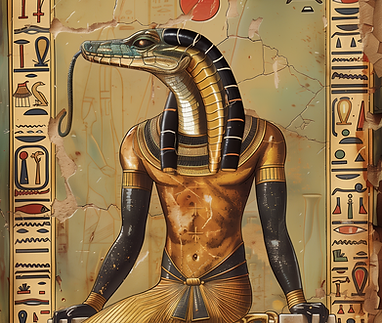
The Sun
Itet [Ee-tet]

Itet is the primary God, sitting at the throne of the pantheon. He has the grand head of a Cobra and a body scaled entirely in gold. He is the Sun itself, but also represents the day, fire, and sons. Itet may have bold imagery, but He is considered a patient and intelligent King, striking in myth only when the time was right. Everything above ground, is considered in His domain - and His relationship with Khemose who controls the Beneath is respectful and peaceful.
His symbol is that of a stylised sun, and is a very common fixture in architecture and masculine clothing. Any successful King tries to liken himself to Itet, appearing wise and untouchable, with no haste to action. The sun image is the most common marking on coins historically.
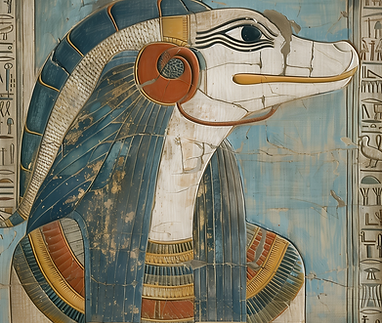
The River
Neth

Neth is the wife of Itet, and is represented as a slender, flat-chested woman with the head of a watersnake. She is the Goddess of water and rivers, and the grand river that the Amura live on is known as Iteru-Neth in Her name. She is portrayed as calm and free-flowing, providing serenity and flexibility to the world around them and the people. A lot of Her worship involves meditation and quiet prayer, listening to the sounds of the Amuran waterways.
Together, Neth and Itet join into a Greater God known as Itet-Neth, without gendered terms, who is the deity of Life. Most often they are represented apart, but appear as the joined God for certain celebrations and births as the Amura consider water and light to be the sole creators of life.
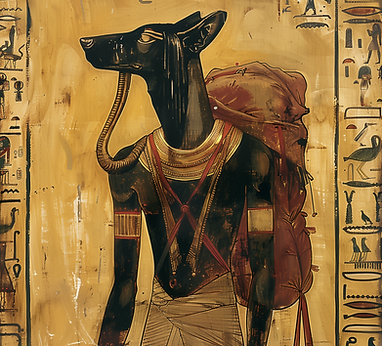
The Desert
Userkaf [Oo-ser-kaf]

Userkaf is a slender, agile dog-headed God of travel and the desert. He is usually represented in sand-covered rags and carrying a pack. He is hardy and quick-witted, clever enough to safely navigate the sands that He has inherited from the Lost Serpents. Rather than the 'creator' of the desert, He is the steward and guide. Experienced caravaneers travel with desert hounds, jackals, or even hyenas as part of their ‘pack’, for Userkaf's protection and sled-pulling on the sands.
The symbol of Userkaf is usually a rendition of His dog-head in profile, and its commonly incorporated into Merchant sigils, put onto road signs and added to carts. Occasionally, out in the wastes, it marks semi-secret caches and ruins repurposed as camps for any who may find them by His cult.
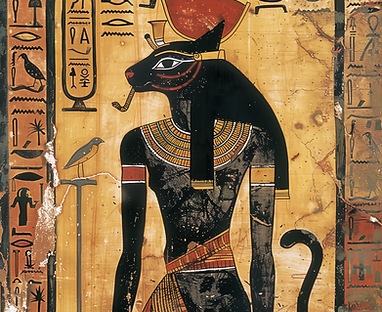
The Animals
Bajet [Bah-jet]

Bajet is the cat-headed Goddess of protection and animals - she is sleek and small, but with the cunning of a feline. People pray to her for protection of their homes, crops, of their ventures and even for luck in the case of gambling. Animals in general are very well-respected by the Amuran people, even if put to work, because they are considered to be the charge given to them by the Great Snakes. What the Amura are to these Gods is what animals are to the Amura - cared for, guided, and protected. Cats in particular, even when stray, are fed and given lots of affection.
Her symbol is a cat’s eye, and its quite often found on Amuran coins on the opposite side to Aziz’s eye. These coins are considered lucky.
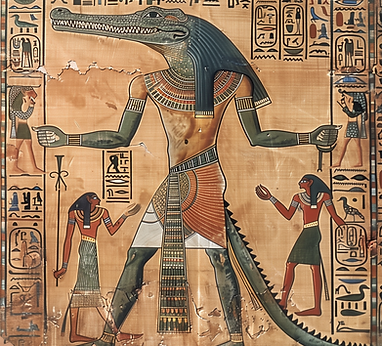
The Battlefield
Aytesh [Eye-tesh]

Aytesh is the crocodile-headed God of war and strategy. The Iteru-Neth has many crocodiles along its shore and the Amura are very aware of the danger of these animals. Aytesh is represented as a strong, broad, large man with a great many teeth in his scaled maw - he wields a kopesh in one hand and an ankh in the other. Much like the other Gods, and how the Amura fancy themselves, He is seen as a cunning and intellectual battlemaster rather than a brute - which is how they trivialise foreigners.
The ankh is His primary symbol, and is frequently found decorating city walls and sitting over blacksmith’s door. He’s associated with metal and is capable of wielding Itet’s fire to keep the snakefolk safe - though only for that, and nothing else. Soldiers are known as Ayteshi throughout Amu-tep.
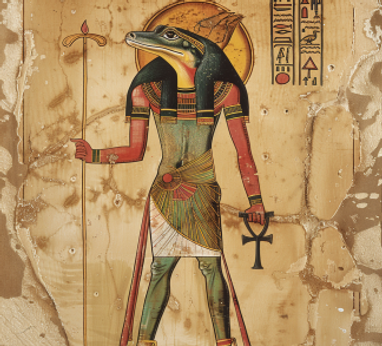
The Knowledge
Khepet [Kep-et]

Khepet is a tall, long-legged and frog-headed Goddess of knowledge. She is usually depicted in paper-coloured robes and holding both a scroll and a dagger, meant to symbolise the power and danger of knowing. Frogs are widely regarded as very wise animals, and it is illegal to cook and eat them - they’re often considered esteemed guests in gardens, and good omens for children who are still in school, because it means Khepet is keeping an eye on them. Most scholars will serve some time in one of Her temples in their youth.
The very rare Aetheric Attuned amongst the Amura usually turn to Her for wisdom and mastery, and as there is no other defined place for them in the society, they are typically smuggled into the faith and hailed as prophets. These attuned souls are rarer here than anywhere else in the world.
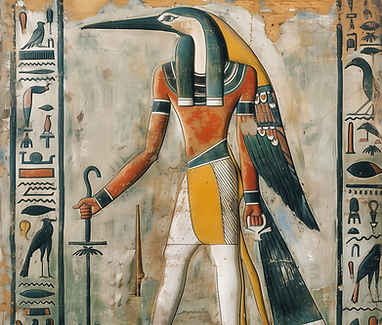
The Beneath
Khemose [Kem-oze]

Khemose is a pale, heron-headed God of Death. He is of equal importance to Itet, but will almost never be seen represented in the streets of Amuran cities. A foreigner may not realise that He exists at all. Worship of Him is considered a deeply private thing, and traditionally his temples are underground or in caves. He shares these spaces with memorabilia for the Lost Serpents, who He watches over. The only time that His symbol is seen above ground, is typically at funeral rites, where a body is mummified. His drawn symbol is that of a canopic jar.
Amongst caring for the dead, divine or mortal, He is also the God of caves and the 'Beneath', meaning the Afterlife. He brings comfort to Amura in the dark, protecting what Itet's sun cannot.
Author: Oakbug
Contributions: Hugh-Gi-Oh & Hokan
Page Created by: Oakbug
